
Killer Instinct is a 2.5D fighting game developed by Rare and published by Midway. It was originally released for arcades in October 1994, and ported to the Super Nintendo Entertainment System and the Game Boy the following year. The game's plot involves an all-powerful corporation organizing a fighting tournament. The story was adapted in a limited comic book series published under the short-lived Acclaim Comics imprint.

Mortal Kombat 4 is a 1997 fighting game, the fourth main installment in the Mortal Kombat franchise, and a sequel to 1995's Mortal Kombat 3. It was developed by Midway Games. Released to arcades in 1997, Mortal Kombat 4 is the first title in the series, and one of the first made by Midway overall, to use 3D computer graphics. It is also the last game of the series to have an arcade release. It was ported to the PlayStation, Nintendo 64, PC, and Game Boy Color in 1998. An updated version titled Mortal Kombat Gold was released exclusively for the Dreamcast.
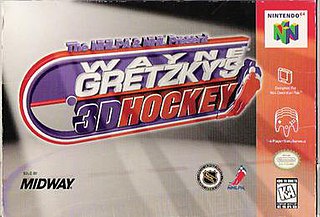
Wayne Gretzky's 3D Hockey is a video game developed and published by Atari Games for the arcade in 1996. A port for the Nintendo 64 console was released almost simultaneously with the arcade version, on November 15, 1996, making it the first-ever 4-player game for the Nintendo 64, beating Mario Kart's Japanese release by more than a month. The game was followed by a sequel, Wayne Gretzky's 3D Hockey '98.

Cruis'n USA is an arcade racing game originally released in 1994. It was developed by Eugene Jarvis' company TV Games Inc., and manufactured by Midway Games. It is the first game in the Cruis'n series and features races set in locations across the continental United States.

Mortal Kombat 3 is a 1995 arcade fighting game developed by Midway Games and first released into arcades in 1995. It is the third main installment in the Mortal Kombat franchise and a sequel to 1993's Mortal Kombat II. As in the previous games, it has a cast of characters that players choose from and guide through a series of battles against other opponents. The game avoids the tournament storyline of its predecessors, as various warriors instead fight against the returning Shao Kahn, who has resurrected his bride Sindel and started an invasion of Earthrealm.

Mortal Kombat Trilogy is a fighting game released by Midway in 1996 as the second and final update to Mortal Kombat 3 for the PlayStation, Nintendo 64, Sega Saturn and PCs. Further versions were also released for the Game.com and R-Zone. It features a similar basic gameplay system and the same story as Ultimate Mortal Kombat 3, but adds characters and stages restored from Mortal Kombat and Mortal Kombat II. New additions to the game included the "Aggressor" bar. The Brutality mechanic was introduced with this installment. The game was met with positive to mixed reviews upon release.

Mortal Kombat II is a fighting game originally produced by Midway for the arcades in 1993. It was ported to multiple home systems, including MS-DOS, Amiga, Game Boy, Game Gear, Sega Genesis, 32X, Sega Saturn, Super Nintendo Entertainment System, and PlayStation only in Japan, mostly in licensed versions developed by Probe Software and Sculptured Software and published by Acclaim Entertainment.
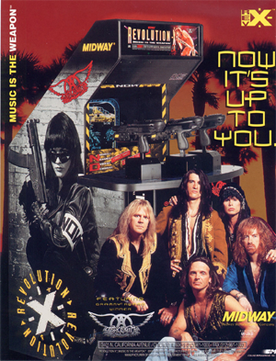
Revolution X is a shooting gallery video game developed by Midway and released in arcades in 1994. The gameplay is similar to Midway's earlier Terminator 2: Judgment Day, but is themed around the band Aerosmith. The oppressive New Order Nation regime and their leader Helga have abducted Aerosmith, and players use a mounted gun to control onscreen crosshairs and shoot enemies. The members of Aerosmith are hidden throughout the game's international locales and must be found in order to receive the game's true ending.

Ultimate Mortal Kombat 3 is a fighting game in the Mortal Kombat series, developed and released by Midway to arcades in 1995. It is a standalone update of 1995's earlier Mortal Kombat 3 with an altered gameplay system, additional characters like the returning favorites Reptile, Kitana and Scorpion who were missing from Mortal Kombat 3, and some new features.

Mortal Kombat Mythologies: Sub-Zero is a 1997 action-adventure game developed and published by Midway for the PlayStation and Nintendo 64. A spin-off of the Mortal Kombat franchise, it is the first installment to not be a fighting game. Set before the original 1992 game, players control Bi-Han, the elder Sub-Zero, during his quest to find Shinnok's amulet. It also serves as a prequel to Mortal Kombat 4, which was released the same year, introducing characters and story elements that would be used by the fourth main installment. Mythologies is the final game in the series to use digitized actors.
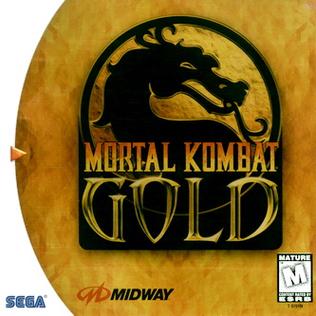
Mortal Kombat Gold is a 1999 fighting game in the Mortal Kombat series that was published by Midway Home Entertainment. It was developed by Eurocom and released exclusively on the Dreamcast as a launch title. It is an updated version of 1997's Mortal Kombat 4 and was the first game to appear on a sixth-generation platform as well as the only Mortal Kombat game to be released for the Dreamcast console. Critical reaction was mostly average due to the graphics being inferior to the arcade version, the weapons deemed boring or useless, and game-breaking bugs and glitches.

War Gods is a fighting video game originally released to arcades by Midway Games in 1996. Ports for the Nintendo 64, PlayStation and Windows were released in 1997. In the game, players control one of ten fighters who have been given great power by a mysterious ore that crashed-landed on Earth from outer space. The object of the game is to defeat all the other fighters to become the most powerful warrior on the planet.

Rampage World Tour is an arcade video game released in by Midway Games in 1997 as the sequel to Rampage. It was developed at Game Refuge by Brian Colin and Jeff Nauman, who designed the 1986 original. Ports were released for the Sega Saturn, Nintendo 64, Game Boy Color, PlayStation, and Microsoft Windows. It was re-released on Midway Arcade Treasures 2 and included in Rampage: Total Destruction.
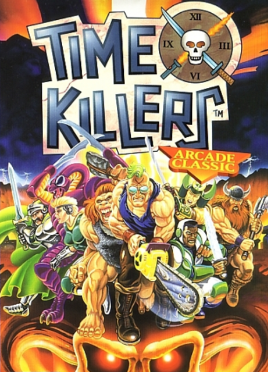
Time Killers is a 1992 weapon-based fighting arcade game developed by Incredible Technologies and published by Strata. Along with Allumer's Blandia, Time Killers is one of the earliest weapon-based fighting games modeled after Capcom's Street Fighter II (1991). It was later overshadowed by the success of SNK's 1993 weapon-based fighting game, Samurai Shodown. In Time Killers, eight warriors from different periods in history face off with each other, and then Death, for a chance at immortality.
Digital Compression System, or DCS, is a sound system developed by Williams Electronics. This advanced sound board was used in Williams and Bally pinball games, coin-op arcade video games by Midway Manufacturing, and mechanical and video slot machines by Williams Gaming. This sound system became the standard for these game platforms.

NBA Hangtime is a 1996 basketball arcade game developed and released by Midway. Home versions were released for the Nintendo 64, PlayStation, Super NES, Sega Genesis, and Microsoft Windows. A version for Game.com was announced, but cancelled.

Arcade's Greatest Hits: The Atari Collection 1 is a compilation of Atari arcade games for the Sega Saturn, PlayStation, and Super Nintendo Entertainment System. It is a successor volume to Williams Arcade's Greatest Hits. Most of these games fall into the action game category. The Saturn and PlayStation versions of the game include an FMV documentary on the "Golden Age of Atari", featuring video interviews with the programmers behind the six games in the compilation. The later Super NES version was announced by Midway as their final release for any "16-bit" console.
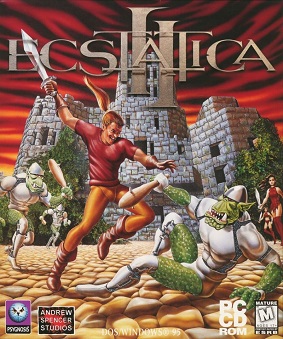
Ecstatica II is an action-adventure game developed by British team Andrew Spencer Studios and released for DOS/Windows by Psygnosis in 1997. It is a sequel to Ecstatica.
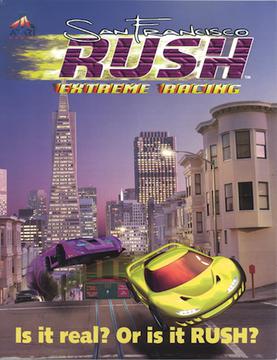
San Francisco Rush: Extreme Racing is a video game developed and published by Atari Games. This game was first released in arcades in 1996 and was ported to Nintendo 64 in 1997 and the PlayStation in 1998. San Francisco Rush: Extreme Racing is the first game in the Rush series.

Mortal Kombat is a 1992 fighting game developed and published by Midway. It is the first entry in the Mortal Kombat series and was subsequently released by Acclaim Entertainment for nearly every home platform at that time. The game focuses on several characters of various intentions who enter a martial arts tournament with worldly consequences. It introduced many key aspects of the Mortal Kombat series, including the unique five-button control scheme and gory finishing moves called Fatalities.



















